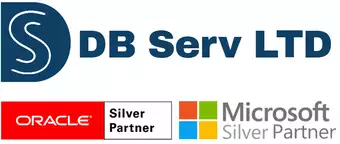DevOps services
Increase the productivity of your business by facilitating continuous collaboration between development (Dev) and operations (Ops) departments. DB Serv, as a DevOps services company, will assist in implementing best practices to ensure effective interaction among your teams.
DevOps is more than just a set of tools; it encompasses a series of practices and processes aimed at fostering collaboration between development and operations teams. This approach shortens the deployment time for new software versions, minimizes risks associated with human error, and boosts overall productivity.
Process automation, elimination of bottlenecks, and faster product launches without compromising quality are key benefits of utilizing DevOps services, making them an integral part of successful modern businesses.

What Are DevOps Services?
DevOps services include a comprehensive set of activities aimed at improving the processes of application development, testing, and deployment. The primary goal of DevOps is to ensure quick and secure software delivery. Typical DevOps services may include:
CI/CD Automation (Continuous Integration and Continuous Delivery)
Container Orchestration
Infrastructure as Code (IaC)
Monitoring and Logging
DevSecOps Security
When Is Professional Help Needed?
Maintaining effective DevOps operations requires a deep understanding of modern technologies and infrastructure management approaches. Professional assistance may be needed if:
- Your team frequently experiences issues with new feature releases;
- Automation processes are lacking or need significant improvement;
- You need to transition to cloud solutions or expand your infrastructure;
- Ensuring security across all stages of development is challenging.
At DB-Serv, our DevOps specialists can provide ready-made solutions to minimize risks and boost productivity, addressing weaknesses and bottlenecks in existing processes.

Who We Are and What We Work With
DB-Serv is a team of database and DevOps experts. We work with leading management systems, delivering comprehensive solutions to meet your company’s needs. Our mission is to help you create a stable, secure, and high-performing infrastructure for your business.
Our work encompasses tools and technologies such as:
Kubernetes, Docker
Jenkins, GitLab CI
Ansible, Terraform
Prometheus, Grafana
We offer holistic solutions tailored to the unique needs of your business and IT infrastructure.
How We Can Help Your Project
Our team of DevOps engineers will help you optimize and automate every stage of infrastructure management and development. We offer:
☑️ Faster Development Cycles: Automated processes bring your products to market faster.
☑️ Enhanced Stability: With monitoring and security setup, you minimize risks of outages and downtime.
☑️ Scalability: Using cloud technologies and container orchestration, your infrastructure can adapt to increasing demands.
☑️ Integrated Security: We implement DevSecOps to protect your software from cyber threats at every stage of development.
Each of our solutions is client-focused, and we configure infrastructure to support both current and future workloads, ensuring 24/7 application and data availability.
Benefits of Implementing DevOps Processes
Reduced Deployment Time
Cost Savings
Improved Product Quality
Flexibility and Adaptability

DevOps Services Price List
The cost of DevOps services at DB-Serv is based on several factors: project scope, infrastructure complexity, required workload, and delivery timelines. We provide transparent pricing, and the price quoted at the start remains fixed throughout the project.
However, it is challenging to provide an exact cost in advance, as the price is influenced by factors such as:
✅ Number of Servers
✅ Data Volume and User Count
✅ Specific Backup and Security Requirements
✅ Integration with Other Systems
To take advantage of our DevOps services, you can easily reach out through our website by filling out a service request form. We will conduct a preliminary assessment of your requirements, develop an implementation plan, and offer solutions that make your business more agile and efficient.
Our team is ready to assist you at any stage — from strategy development to complete implementation and ongoing DevOps process support.
 FAQ
FAQ
Why do I need DevOps?
DevOps practices are essential when you want to accelerate the development of products while maintaining high quality. This approach is also relevant for companies looking to improve collaboration between development and operations teams and simplify work on existing deployments.
What is the main goal of DevOps?
The main goal of DevOps is to build a resilient infrastructure and ensure the scalability of digital products by merging two key areas: development and operations.
How do I engage your DevOps Services?
To order DevOps services, please contact us via email at info@dbserv.com, briefly describing your issue. Alternatively, you can call the phone number in the “Contacts” section. Our manager will get in touch with you to initiate collaboration.
